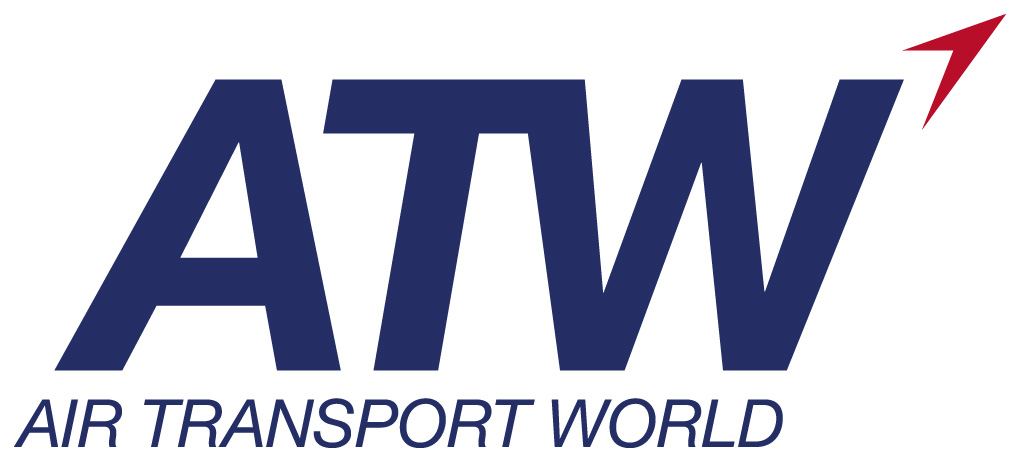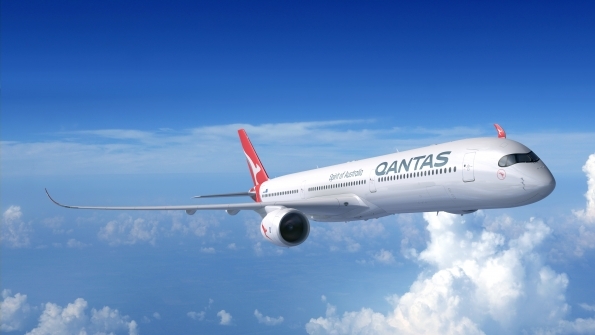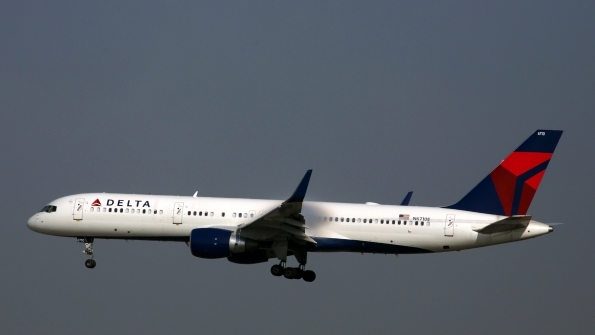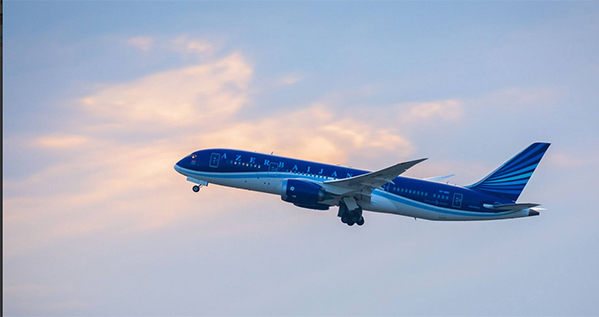In the coming days, we will be combining the Aviation Week Network content sites into one powerful new website. One location, all tied to a single login and password, with improved access to prime Air Transport publications including ATW and Aviation Daily.
We are in the final stages of migrating our websites, so today’s Air Transport Digest does not include full story links. Here are our editors’ picks of top stories.
We look forward to welcoming you to our new and improved website very soon. |
|
|
|
Qantas selects Airbus A350-1000 for ultra-long-haul flights | Adrian Schofield
Qantas has selected the Airbus A350-1000 as its preferred choice for its ultra-long-haul plan known as Project Sunrise, although a final decision is still to come. |
|
|
|
The carrier had been assessing aircraft proposals from Boeing and Airbus to operate nonstop flights from Australia’s east coast cities to London or New York by the first half of 2023. While Qantas stressed it has yet to place an order, “after detailed evaluation of the Boeing 777X and Airbus A350, Qantas has selected the A350-1000 as the preferred aircraft if Sunrise proceeds.”
Qantas said it has extended its estimate for a “final go/no go decision” on Project Sunrise until March 2020. It had previously said it wanted to make a decision by the end of 2019.
Airbus has agreed to extend the deadline for confirming delivery slots until March, Qantas said. The airline intends to “work closely with Airbus to prepare contract terms for up to 12 aircraft ahead of a final decision by the Qantas board.” Airbus will add an extra fuel tank and “slightly increase the maximum takeoff weight” on the -1000s to meet Qantas’ requirements, according to the airline.
Qantas said reaching a deal with pilots is “the last remaining gap on the Project Sunrise business case.” Negotiations with pilots are continuing, and the airline said it has proposed pay increases as well as productivity gains. It wants the ability under its contracts to use the same pilots across the A350 and A330 fleets.
The carrier said Dec. 13 that “final discussions” are still required with Australia’s Civil Aviation Safety Authority to “approve an extension to current [crew] operating limits required for these ultra-long-haul services.” However, CASA “has provisionally advised that it sees no regulatory obstacles to the Sunrise flights,” Qantas said.
“The A350 is a fantastic aircraft and the deal on the table with Airbus gives us the best possible combination of commercial terms, fuel efficiency, operating cost and customer experience,” Qantas CEO Alan Joyce said. “This is the right choice for the Sunrise missions and it also has the right economics to do other long-haul routes if we want it to.” |
|
|
|
| | | |  | Electric cars, electric trucks … why not electric airplanes? A Colorado company is betting their “eFlyers” will change the aviation industry for the better. Click to read more. |
|
|
|
Report: Boeing 737 production plans threatened by ongoing MAX issues
Guy Norris
With the 737 MAX return-to-service date now set to slide deeper into 2020 and continuing uncertainty over when the aircraft will be approved by the FAA and international regulators, Boeing is reportedly delaying plans to accelerate production to 57 per month until 2021.
Boeing cut 737 production from 52 to 42 per month in April in the wake of the global grounding of the MAX in March following two fatal accidents. However, in October, amid signs that the aircraft was on track for approval to return-to-service by year-end 2019, the company announced it hoped to return to its original pre-grounding production ramp trajectory over a series of steps and achieve a planned rate of 57 aircraft per month by the end of 2020.
Now, according to a Reuters report, as delays to the approval of the MAX mount up, Boeing has pushed back the schedule for the rate rise by several months with the first step, a rate rise to 47 per month, delayed until March 2020. The next phase would see the rate increase to 52 per month in September 2020 and the follow-on push to 57 per month would not occur until April 2021. The report also indicates that these timelines could also slide further, pending the potential impact of additional delays to re-certification.
Boeing is not commenting on the potential production plan revision which, if confirmed, would have a significant overall impact on the company’s earnings for 2020 and beyond. Although these are expected to rebound in 2020 with the gradual delivery of around 400 aircraft already completed, the company is counting on the accelerating MAX production rate to backfill the delivery pipeline and generate income. Aside from losses associated with the MAX crisis, Boeing’s 777X program has been delayed a year and the cash-generating 777 and 787 lines are both scheduled to slow later in 2020.
Some analysts meanwhile do not appear to be surprised by the news. Robert Singarn of Credit Suisse said, “we have always viewed Boeing’s ramp schedule as optimistic and have been modeling the ramp to 47 for the third quarter of 2020 and to 57 for the third quarter of 2021.”
The potential change in the ramp-up plan comes after FAA Administrator Steve Dickson told members of the U.S. Transportation and Infrastructure committee on Dec 11. that the proposed fixes to the MAX will take longer to complete than Boeing originally projected. Outstanding work includes completion and approval of updated training and reviews of final design documentation by both the FAA and the independent Technical Advisory Board that is validating Boeing’s changes and advising the agency. |
|
|
|
| | | |  | Would you like to improve cabin security and reduce the number of passenger items left on board the aircraft? Would speeding up cabin checks improve your efficiency? KomyMirror can help you do that. Flat and ultra-lightweight, KomyMirror provides a wider field of view than other mirrors. |
|
|
|
Delta forecasts revenue to boost 4-6% in 2020 | Sean Broderick
Delta Air Lines is projecting revenues of $49 billion in 2020, a 4-6% bump above its projected full-year 2019 top line, the carrier said during its Dec. 12 investor day. |
|
|
|
“What I’d say is that momentum that we see in the business is going to stay,” CEO Ed Bastian said. “We’ve had a great fourth quarter of the year—that demand has carried us forward as we close out the year for the holidays,” he added.
The quarter included a new single-day revenue record on Dec. 1, the Sunday after US Thanksgiving, when the carrier took in nearly $200 million—about 10% more than its previous one-day best.
“We see that revenue growth going into 2020,” he continued. “All signs are the US consumer continues to do well.”
Delta also reiterated its previously projected non-fuel unit cost rise of 2-3% in 2020, while unit revenues will be flat to up 2%.
“Don’t lose sight of the fact that total unit costs are only going to be up 1% to 2% because we expect fuel to be flat year-on-year,” Bastian said. “Our unit revenue and our unit cost in total are pretty well balanced going into the year.”
Delta’s projected capacity growth in 2020 is 3-4%, a slight dip from 2019’s projected 4.5%.
After recent increases in secondary hubs including Boston and Seattle, the Atlanta-based carrier will focus on adding capacity in “core” markets, including Detroit and Minneapolis, president Glen Hauenstein said.
“Now that we’ve got those positions solidified, we can go back to our core hubs, which, quite honestly, are a little bit easier for us to grow, and they’ve been ignored,” he said. |
|
|
|
| | Azerbaijani AZAL Plans To Double Its Fleet | Recaro Inaugurates Expanded Chinese Plant | IAI-Converted 737Fs Subject To Loading Restrictions, Per Israel CAA |
|
|
|
January 22-23, Cartegena, Colombia
February 4-6, Indianapolis, IN |
February 4-5, Miami, FL
February 24-26, Dubai, UAE |
|
|
|
|








